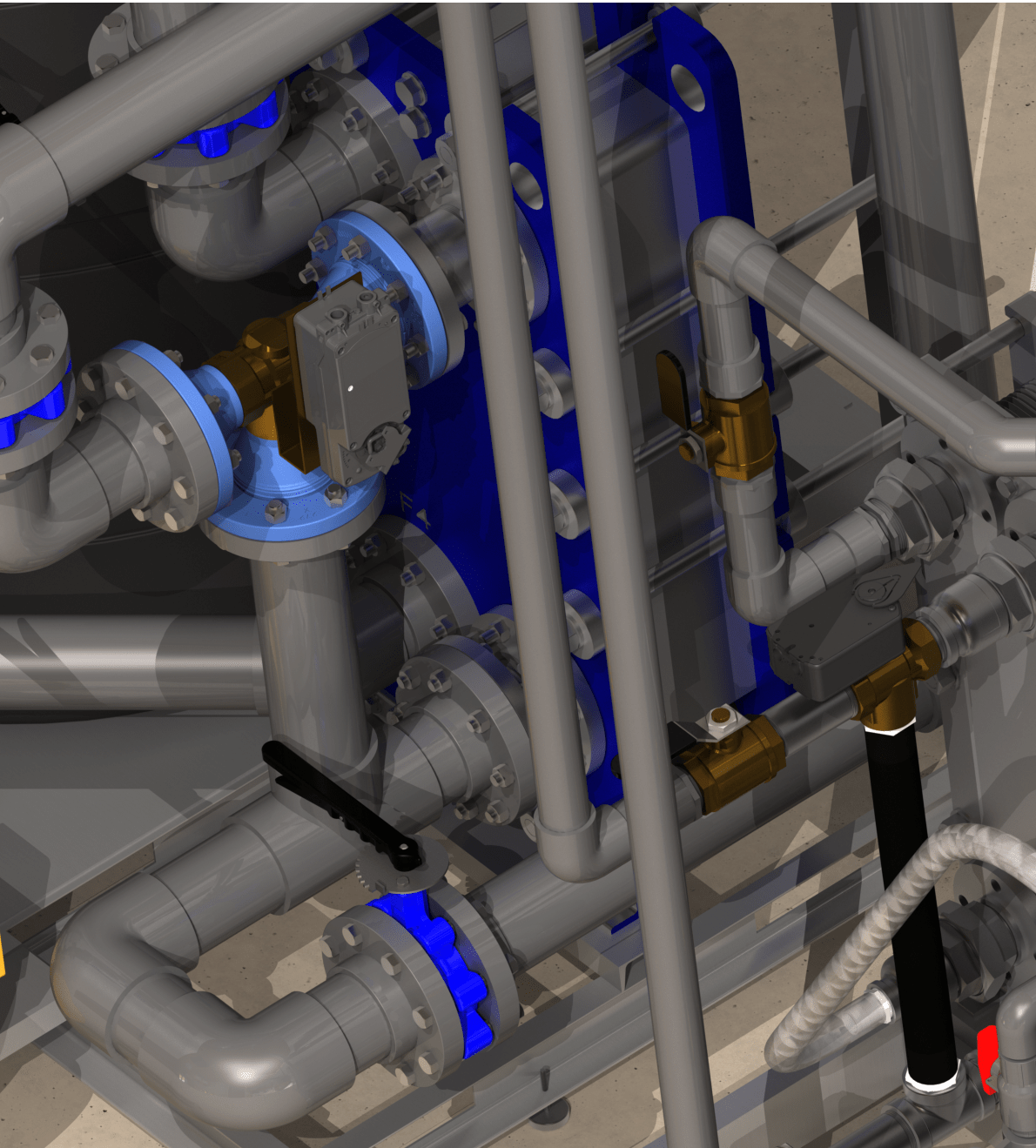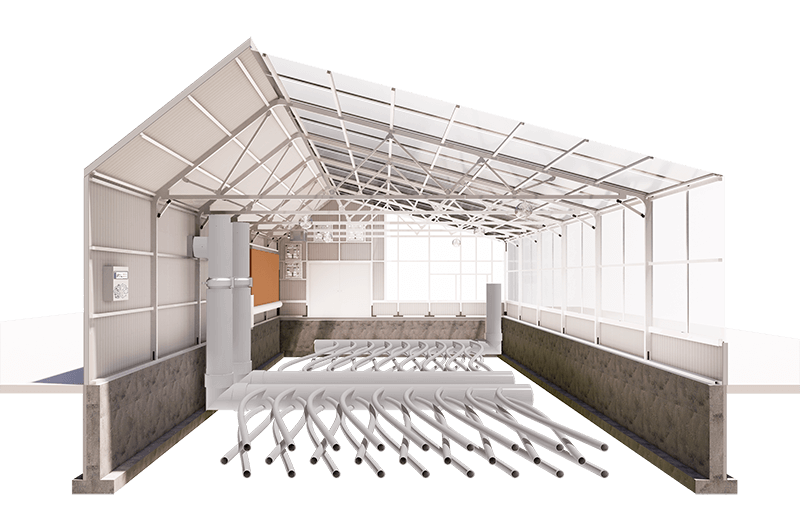Exploring the Potential of DVS Heat Transfer Systems in Next-Gen Thermal Management
Developments in Heat Transfer Equipments: What You Required to Know for Ideal Performance
Developments in Heat transfer systems are changing performance throughout various industries. Advanced materials like graphene and nanofluids promise substantial improvements in thermal conductivity. The integration of IoT and machine learning provides chances for real-time monitoring and improved power efficiency. Nonetheless, the landscape of thermal management is quickly developing (DVS Heat Transfer Systems). Understanding these growths is important for attaining perfect system efficiency and sustainability in the future. What certain innovations are shaping this change?
Emerging Products for Improved Heat Transfer

Advanced Heat Exchanger Layouts
While typical Heat exchangers have actually offered their objective in numerous applications, progressed layouts are currently emerging to satisfy the boosting demands for effectiveness and efficiency. These cutting-edge styles, such as plate, shell-and-tube, and finned-tube Heat exchangers, integrate enhanced surface area areas and boosted flow patterns to raise thermal transfer prices. Additionally, portable styles enable for reduced area requirements without jeopardizing efficiency. Advanced materials, such as composites and corrosion-resistant alloys, furthermore improve longevity and efficiency under extreme problems. Furthermore, simulation technologies and computational fluid dynamics are progressively employed to improve these styles, making certain peak Heat transfer features. As markets look for to reduce power usage and take full advantage of output, the fostering of advanced Heat exchanger styles is crucial in attaining these objectives.
The Function of Nanotechnology in Heat Transfer
Nanotechnology plays a crucial function in boosting thermal conductivity within Heat transfer systems. By adjusting products at the nanoscale, scientists have attained significant enhancements in energy effectiveness. These improvements not only optimize performance yet also add to even more lasting energy solutions.
Enhanced Thermal Conductivity
Considerable advancements in thermal conductivity have arised via the application of nanotechnology, changing Heat transfer systems across various markets. By incorporating nanoparticles into Heat transfer liquids and materials, researchers have actually achieved impressive boosts in thermal conductivity. These nanoparticles, such as carbon nanotubes, graphene, and steel oxides, boost the Heat transfer properties because of their high surface and unique thermal attributes. The resulting compounds display boosted efficiency in applications varying from electronic devices cooling down systems to renewable resource modern technologies. Additionally, the ability to customize the dimension, form, and structure of nanoparticles enables for enhanced thermal administration remedies. Because of this, nanotechnology remains to play a pivotal function in the development of extra reliable and effective Heat transfer systems, leading the way for enhanced commercial applications.
Energy Performance Improvements

Assimilation of IoT in Heat Transfer Equipments
The integration of IoT in Heat transfer systems presents the implementation of clever sensing units that enhance operational performance. These sensors make it possible for real-time information monitoring, permitting immediate changes and optimizations. This technical development has the possible to significantly improve performance and power management in Heat transfer applications.
Smart Sensors Application
As Heat transfer systems develop, the combination of clever sensing units via the Net of Things (IoT) has actually become a transformative approach. These sensors allow real-time monitoring of temperature level, pressure, and circulation prices, enhancing system efficiency and reliability. her comment is here By accumulating and transferring information, they promote proactive maintenance, lowering the danger of system failures. In addition, clever sensing units contribute to power financial savings by refining operational parameters based on environmental problems. Their capability to examine anomalies and trends enables notified decision-making, making certain peak performance of Heat transfer systems. As industries significantly embrace this innovation, the execution of clever sensors stands to revolutionize exactly how Heat transfer systems are taken care of, leading the means for better sustainability and improved efficiency outcomes.
Real-Time Information Tracking
Just how can real-time data keeping an eye on improve the effectiveness of Heat transfer systems? By incorporating Web of Points (IoT) technology, Heat transfer systems can utilize continual data collection from smart sensors. This real-time surveillance allows for prompt analysis of circulation, pressure, and temperature level rates, enabling operators to determine inefficiencies quickly. Consequently, changes can be made to enhance efficiency, minimize power intake, and expand devices lifespan. Additionally, predictive upkeep can be implemented, lessening unexpected downtime and expensive repairs. The capacity to envision efficiency metrics through control panels boosts decision-making, cultivating an aggressive technique to system administration. Ultimately, real-time data keeping an eye on not only boosts operational anonymous efficiency yet also adds to sustainability goals within commercial processes.
Energy Efficiency and Sustainability Trends
Energy efficiency and sustainability fads are improving the landscape of Heat transfer systems, driving advancement and conformity throughout different sectors. Organizations are increasingly prioritizing energy-efficient layouts to reduce operational costs and lessen ecological impacts. The assimilation of eco-friendly power sources is ending up being extra widespread, allowing Heat transfer systems to operate sustainably while meeting regulatory needs. Furthermore, advancements in innovations and materials advertise lower power usage and improve general performance. Lifecycle assessments are additionally obtaining grip, permitting firms to review the environmental impact of Heat transfer systems from production to disposal. This concentrate on sustainability not only sustains corporate obligation however also placements organizations competitively in a market where consumers progressively prefer green solutions. Power efficiency and sustainability continue to be essential considerations for future advancements in Heat transfer modern technology.
Innovations in Thermal Administration Solutions
While the need for effective Heat transfer remains to increase, technologies in thermal administration solutions are emerging to resolve both performance and sustainability difficulties. Advanced products, such as stage change products and nanofluids, are being created to boost Heat transfer effectiveness - DVS Heat Transfer Systems. These materials boost thermal conductivity and enable much better temperature level law in various applications. Furthermore, modern technologies like active thermal control systems are acquiring grip, enabling real-time modifications to manage Heat flow efficiently. These systems add to energy financial savings and reduce the environmental impact of thermal procedures. Additionally, the assimilation of IoT in thermal administration assists in surveillance and predictive upkeep, guaranteeing enhanced performance and durability of Heat transfer systems. In general, these advancements represent significant strides towards more lasting thermal monitoring practices
Future Directions in Heat Transfer Modern Technology
Arising improvements in thermal management remedies signify an encouraging future for Heat transfer innovation. Scientists are progressively concentrating on creating materials with remarkable thermal conductivity and enhanced energy efficiency. Advancements such as nanofluids, which consist of put on hold nanoparticles, provide substantial renovations in Heat transfer performance. Furthermore, the combination of smart materials that adjust to differing temperature level conditions is acquiring grip, enabling for even more receptive and effective systems. The rise of additive production methods is likewise enabling the style of intricate Heat exchanger geometries that maximize liquid flow. The execution of device learning formulas is expected to transform the optimization of Heat transfer systems, promoting anticipating upkeep and performance improvement. Jointly, these innovations are positioned to change the landscape of Heat transfer modern technologies in different sectors.

Regularly Asked Concerns

Just how Do I Select the Right Heat Transfer System for My Application?
Selecting the best Heat transfer system includes reviewing application needs, including temperature level ranges, fluid residential or commercial properties, and performance requirements. Analyzing system kinds, maintenance factors to consider, and cost-effectiveness additionally plays a vital function in making a notified decision.
What Are the Upkeep Needs for Advanced Heat Exchangers?
Maintenance needs for advanced Heat exchangers commonly include regular inspections, checking for leaks, cleaning of surfaces, and guaranteeing ideal flow rates. Sticking to producer standards warranties effective operation and extends the devices's lifespan.
Exactly How Do Environmental Factors Influence Heat Transfer Effectiveness?
Ecological aspects significantly affect Heat transfer performance. Variations in moisture, temperature level, and airflow impact thermal conductivity and convective Heat transfer, inevitably influencing system efficiency and requiring factor to consider during the style and operation of Heat transfer systems.
What Safety And Security Requirements Put On Heat Transfer Solutions?
Security standards for Heat transfer systems normally include standards from organizations such as ASME and ASTM. DVS Heat Transfer Systems. These standards address materials, design, and operational practices to assure reliability, efficiency, and defense versus dangers in different applications
Just How Can I Troubleshoot Common Heat Transfer System Issues?
Fixing common Heat transfer system concerns entails examining for leakages, ensuring appropriate liquid flow, examining insulation honesty, and verifying temperature level differentials. Determining these factors can aid preserve system effectiveness and stop more difficulties.
Nanotechnology plays an essential duty in boosting thermal conductivity within Heat transfer systems. Considerable advancements in thermal conductivity have emerged through the application of nanotechnology, transforming Heat transfer systems across numerous sectors. Developments in thermal conductivity via nanotechnology have paved the way for remarkable enhancements in energy efficiency within Heat transfer systems. Energy effectiveness and sustainability trends are reshaping the landscape of Heat transfer systems, driving development and compliance across various industries. The integration of IoT in thermal management assists in surveillance and predictive maintenance, guaranteeing optimized efficiency and long life of Heat transfer systems.